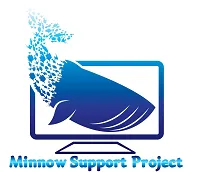It's been a month and a half since I set up my witness node. I can tell you one thing, it's not as easy as it may sound. I've seen numerous posts encouraging people to set up a witness server, with the promise of making big money out of it. The truth of the matter is, running a witness is not a plug-n-play process. It's a responsibility, not a game. It requires personal financial investment, dedication, and most importantly technical skills. Let's go into some details to clear out some of the misconceptions.
(we wish it was, but it's not)

This is

The Hosting

The second consideration for a successful setup, is to have a fail-over mechanism, so in case something goes wrong with the node, you can have a backup server to keep generating blocks for you, or you will be missing blocks, which is bad. Of course, there's the option of disabling the node's signing key in your steem account when things go sour, but the downtime can cost you precious blocks.
As you may know, witnesses are rewarded with Steem Power for every block they generate. It's around 1 SP (last time I checked it was 0.948 SP). The Top 20 witnesses are rewarded 1/5th of that amount, so ~0.190 SP, because they generate more blocks per day. I won't get into the details of the witness economics, there's plenty of other posts that covered that. Needless to say, to be successful, you need to generate enough rewards to cover your monthly expenses, or you will operate at a loss.
And finally, securing your network goes without saying 🔒. In fact, it's important to secure it. You don't want to be hacked (the configs contain private keys) and you don't want a brute force attack on your port 22 that brings down your server, do you? In fact, changing it helps reduce missed blocks.
The Votes

The Dedication

Of course, reaction time is also important when managing your setup. For example, last week my witness server crashed for some mysterious reason, it was on the provider's end, because a few other witnesses crashed too. I was quick to react and manage things, which prompted me to improve my set up a few days later. Other witnesses couldn't do that, for a lack in the things I discussed. Surprisingly, a top 20 witness also experienced simultaneous failures and a lot of missed blocks, which demonstrates that nobody is immune to server problems. If it can happen to the best, imagine what can happen to a non-knowledgeable witness.
Part of the dedication is the constant learning. Therefore reading, interacting with others and understanding the system's operation is part of the witness job. Paying attention to the other witnesses concerns and listening to the more experienced witnesses' wisdom is a source of knowledge that prevents future problems.
Conclusion
A lot of the new witnesses jump onto the witness bandwagon without being aware of the important requirements I mentioned, because nobody tells them about it. It's possible to run only the witness server, but if you do, you risk more when bad things happen. I threw a lot of technical words on purpose because this wasn't meant to be a newbie guide. If you don't understand what I was talking about or don't know how to change dir on linux, then you should probably reconsider running a witness. Some people choose to hire a tech to manage their witness, which is fine, but it adds to your expenses. Reaching the top 100 can be done with enough votes for a newbie witness, banking 1-2 blocks a day. Aiming for the top 50 or the top 20 (even harder), doesn't and won't happen overnight. It takes time, patience and hard work. Are you up for the task?

Join us on https://discord.gg/GpHEEhV


If you really like it, resteem.
If you love it, follow.

🗳 Check out my Steem witness application and vote for me. 🗳
Thank you.
Alternatively, you can issue this command in cli_wallet (after unlocking it)
vote_for_witness "YOURACCOUNT" "drakos" true true
